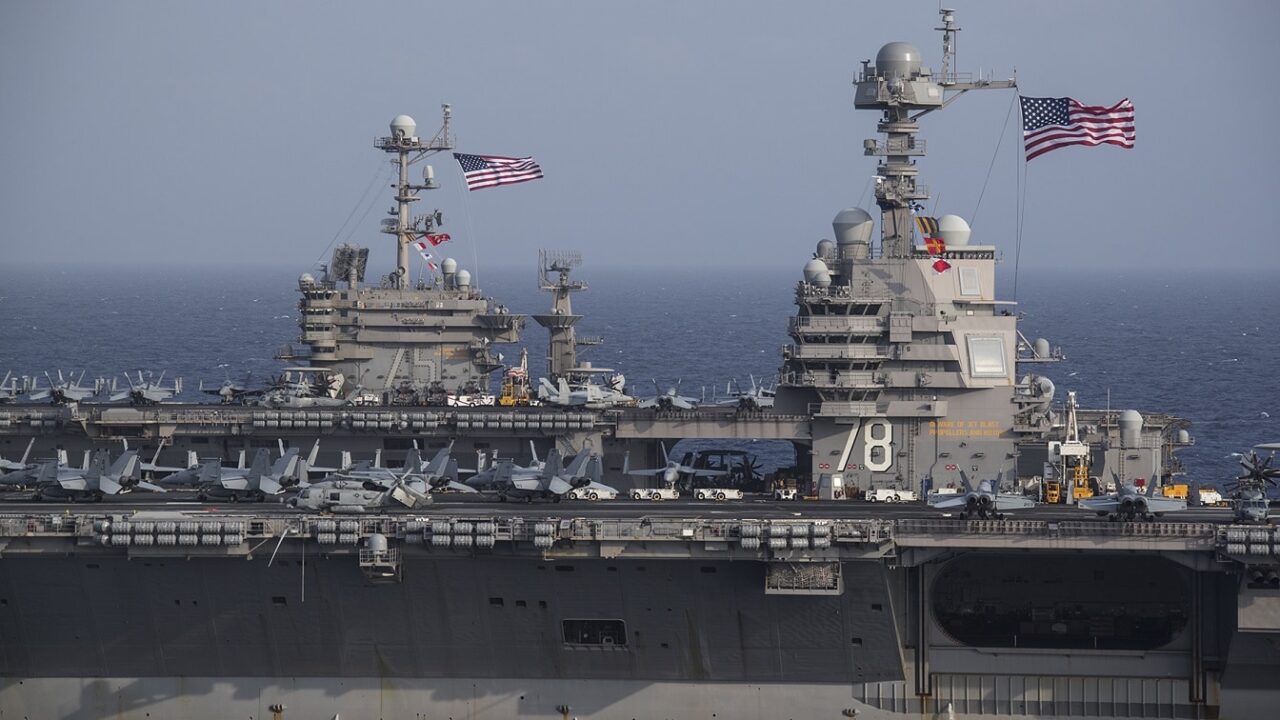While China made headlines last week with the launch of their newest aircraft carrier, the Fujian, they are still well behind the US in terms of aircraft carrier quantity and quality. The US Navy’s newest class of carriers, the Gerald R. Ford-class, is a massive, technologically-advanced marvel of engineering. With two dozen examples of novel technologies, the Ford program has cost a staggering $120 billion USD – with each ship costing a cool $13 billion. Both the resource investment of the Ford program and the sophistication of the design elements signals clearly that the Chinese have not caught up to the Americans with respect to aircraft carrier building.
An aircraft carrier does one thing, really: projects airpower; the aircraft carrier is just a floating, transportable airfield that can be sailed wherever, whenever a nation needs to project its airpower abroad. Accordingly, an aircraft carrier’s productivity is measured in terms of how many flights that carrier can yield, or its Sortie Generation Rate (SGR). The higher the SGR the better. The Ford-class is expected to yield a 33 percent higher SGR than its predecessor, the Nimitz-class. Able to keep aircraft jumpin’ off the deck regularly, the Ford can generate 160 sorties per day (and can even surge up to 270 when needed during wartime). The increased SGR derives mostly from the Navy’s new aircraft launch and recovery technology, especially the Electromagnetic Aircraft Launch System (EMALS) and the Advanced Arresting Gear System (AAG).
On the aging Nimitz and Enterprise carriers, aircraft are launched using a steam piston catapult. The Ford, however, will feature the EMALS, which uses a linear induction motor to create magnetic fields that guide an aircraft along the launching track. In addition to being cheaper, lighter, and less finicky than the steam catapult system, the EMALS is expected to accelerate aircraft smoothly – which will put less stress on the airframes being launched. Additionally, EMALS recharges more quickly than steam catapults and can be calibrated with precise settings to allow for the launching of a wide variety of aircraft. All of the EMALS various benefits combine to boost the Ford’s SGR significantly.
As with so many groundbreaking technologies, developing EMALS was not always smooth – it took time. And money. President Donald Trump even criticized EMALS openly, in an interview with TIME magazine. Despite cost overruns, EMALS is now a completely functional, deployable system, with over 8,000 successful launches under its belt.
While EMALS will launch aircraft, the AAG will help aircraft land. The AAG is a modern arresting gear, which will replace the hydraulic arresting gears used on both the Nimitz and Enterprise. Like EMAL, AAG will allow for precise settings and hence the recovery of a wide variety of aircraft.
Despite incorporating so many expensive new technologies, the Ford was designed to cut costs in the long term. One method the Ford will use for cost-saving: decreased manpower requirements. For example, the Nimitz-class carriers required 5,000 sailors to function. Of course, employing, housing, feeding, and caring for sailors is one of an aircraft carrier’s primary expenses. By reducing the number of sailors, the Ford-class carriers will reduce the amount of costs. Requiring 1,100 fewer sailors (which have been replaced where possible with modern tech), the Ford-class will have significantly fewer personnel-related costs than the Nimitz. Indeed, between the reduced crew requirements, and what should be reduced maintenance requirements, the Ford-class carriers are projected to save $4 billion over the course of their 50-year life cycle.
The first Ford-class is already in service and performing commendably. The second Ford-class has already been launched – and two more ships are under construction. While China is clearly a nation on the rise, and the Fujian deserves respect as a leap-forward for Chinese naval tech, the Ford-class demonstrates clearly that the Americans are still the world’s preeminent aircraft carrier builders.
Harrison Kass is the Senior Defense Editor at 19FortyFive. An attorney, pilot, guitarist, and minor pro hockey player, he joined the US Air Force as a Pilot Trainee but was medically discharged. Harrison has degrees from Lake Forest College, the University of Oregon, and New York University. He lives in Oregon and listens to Dokken. Follow him on Twitter @harrison_kass.

